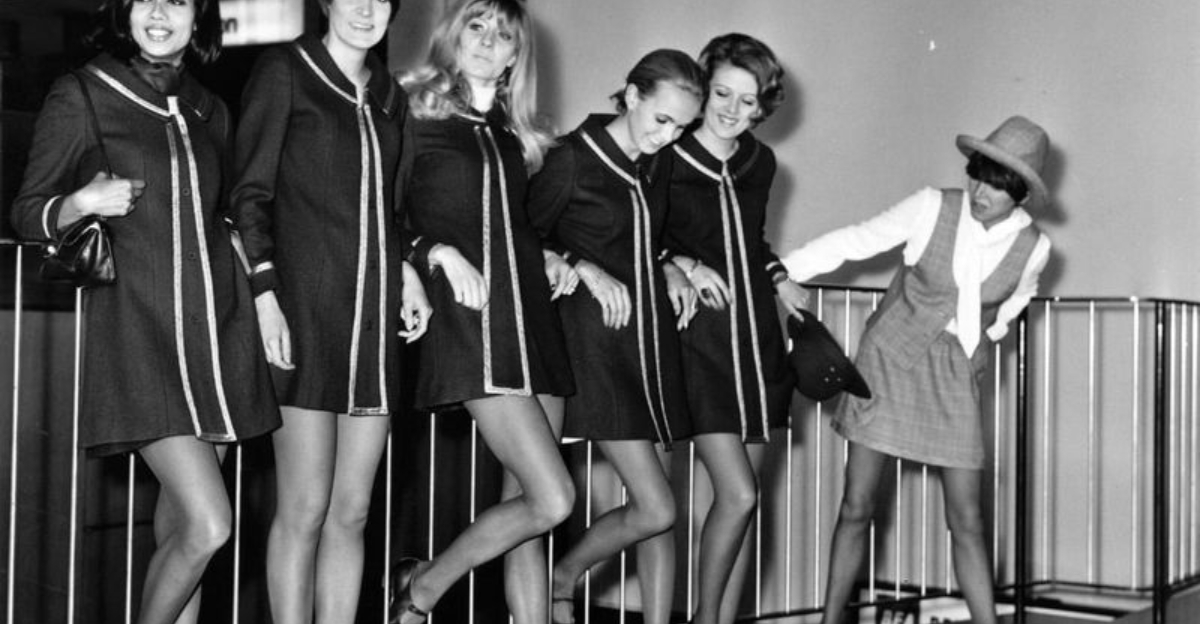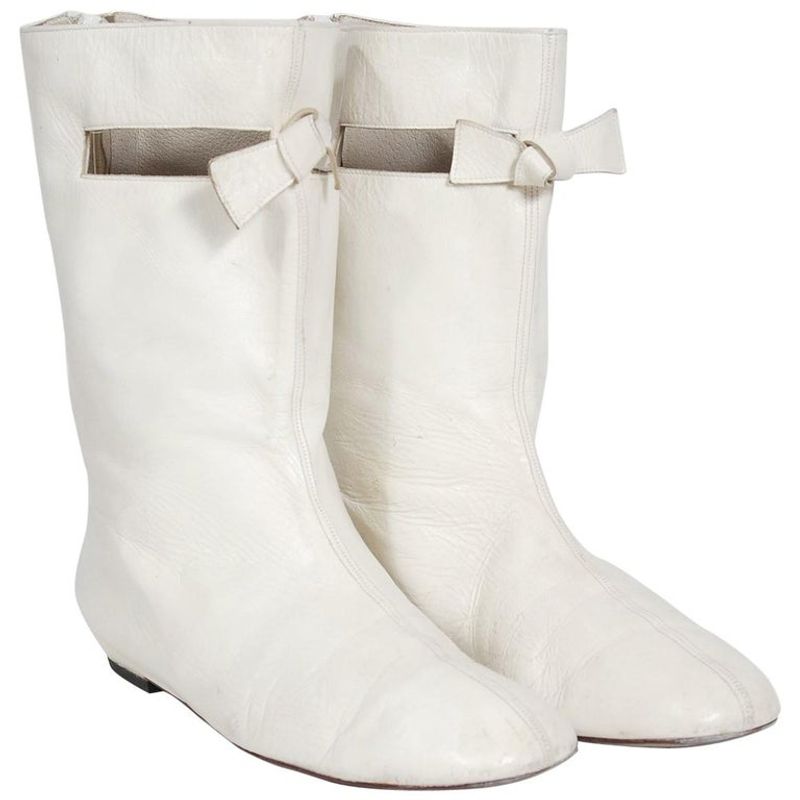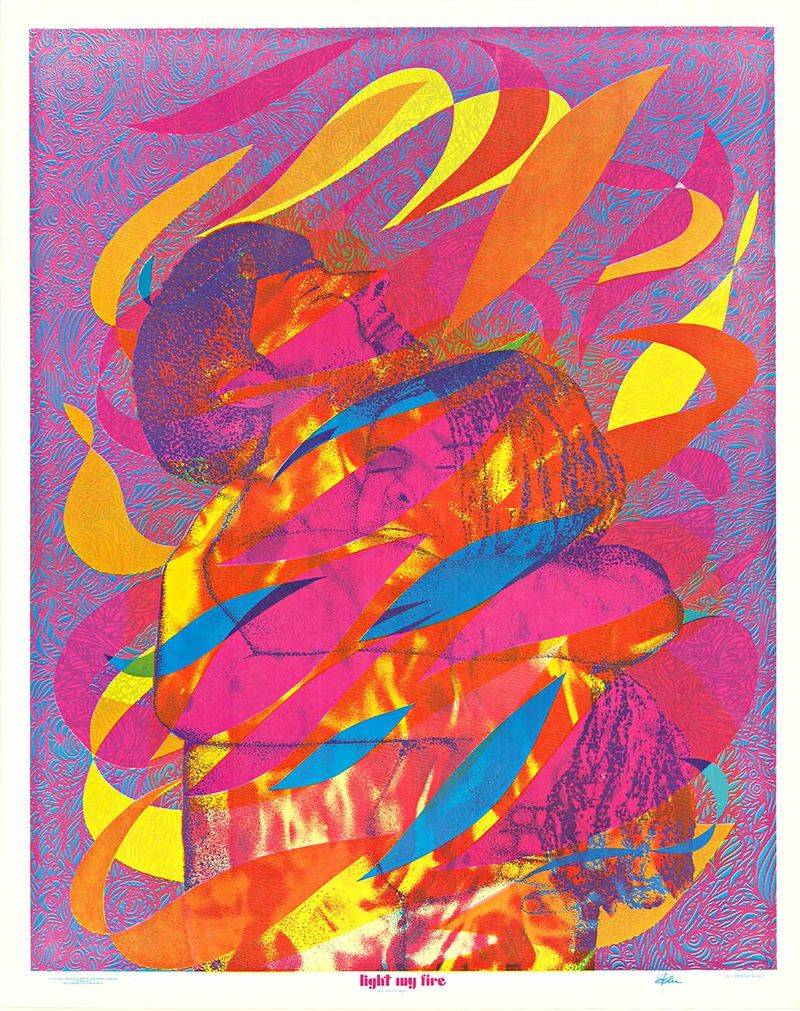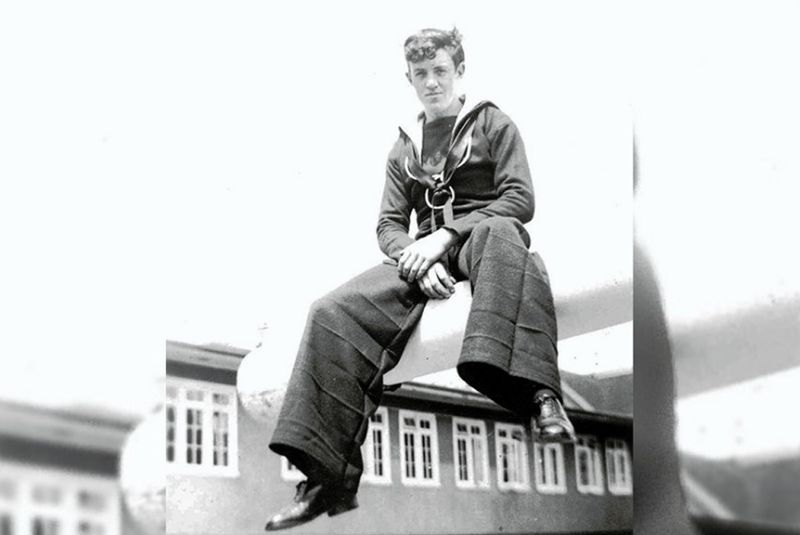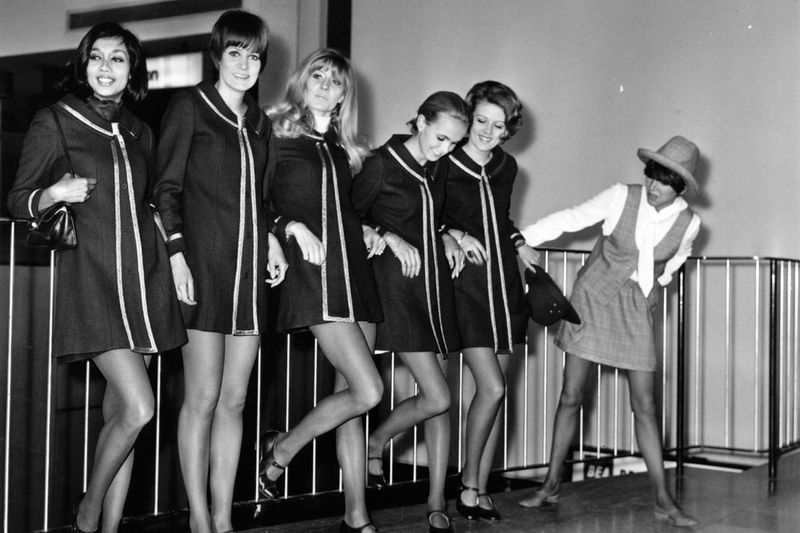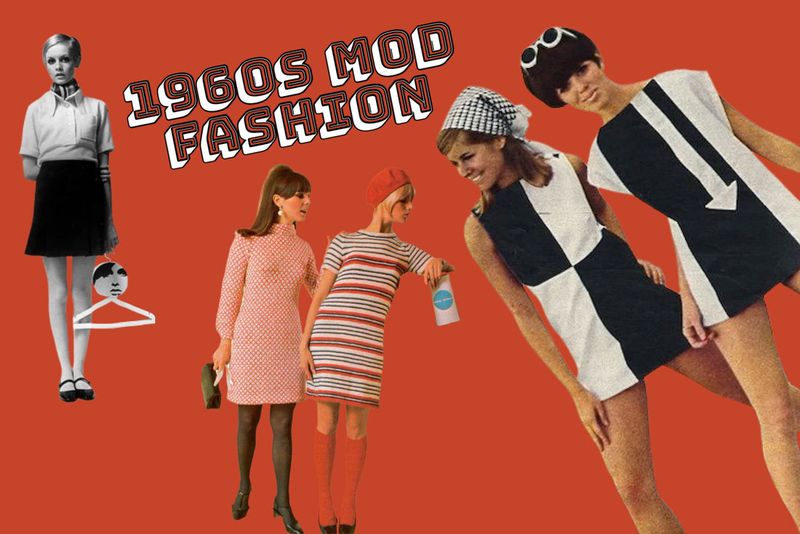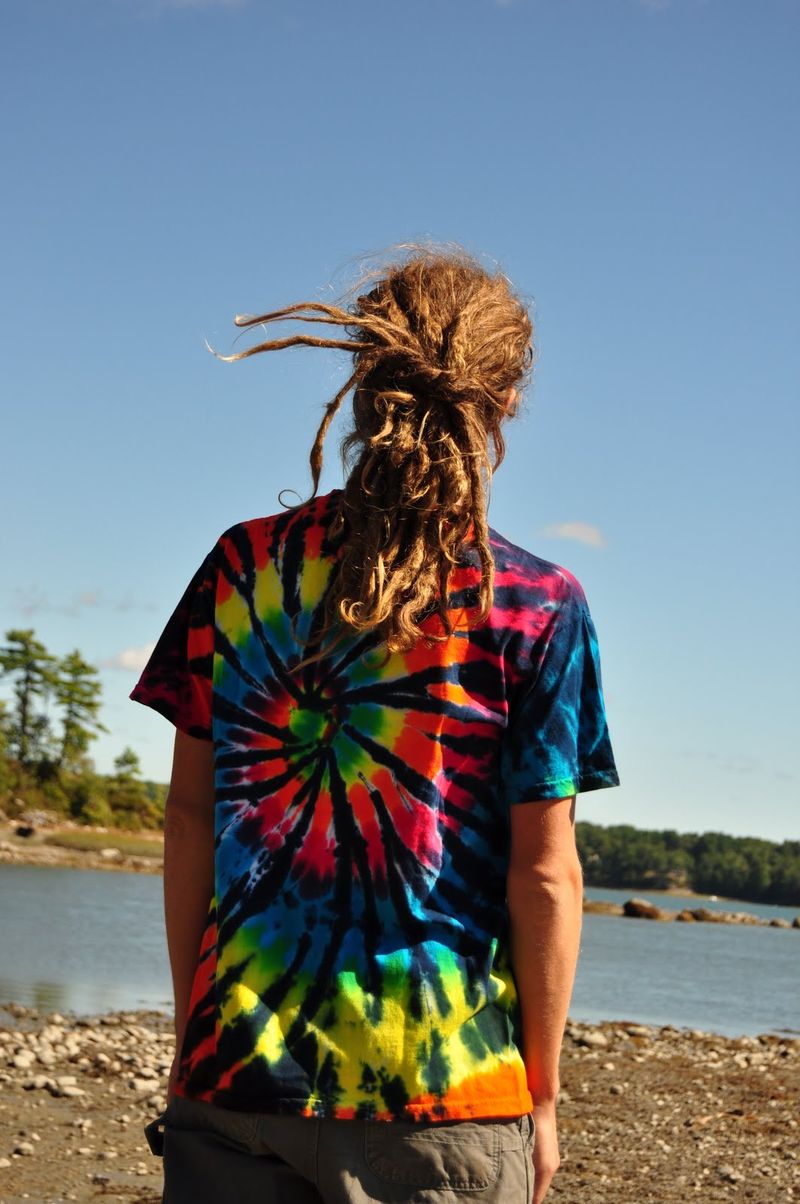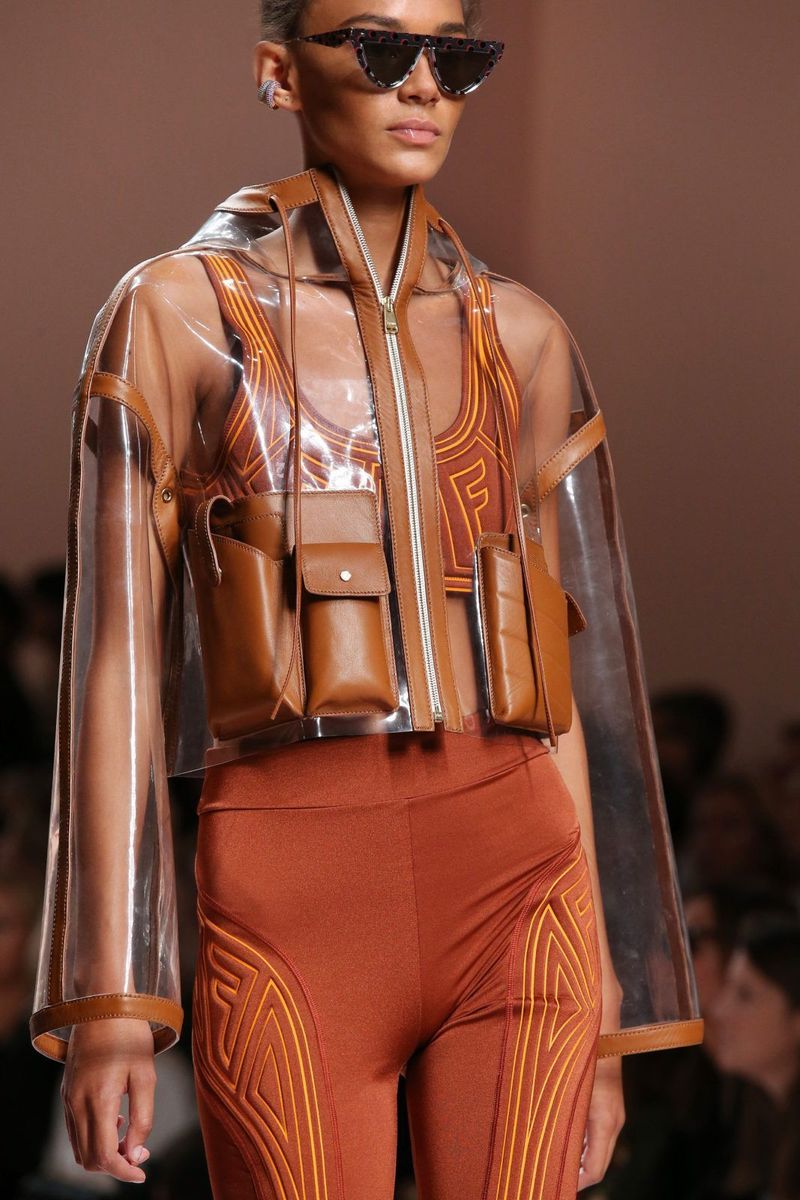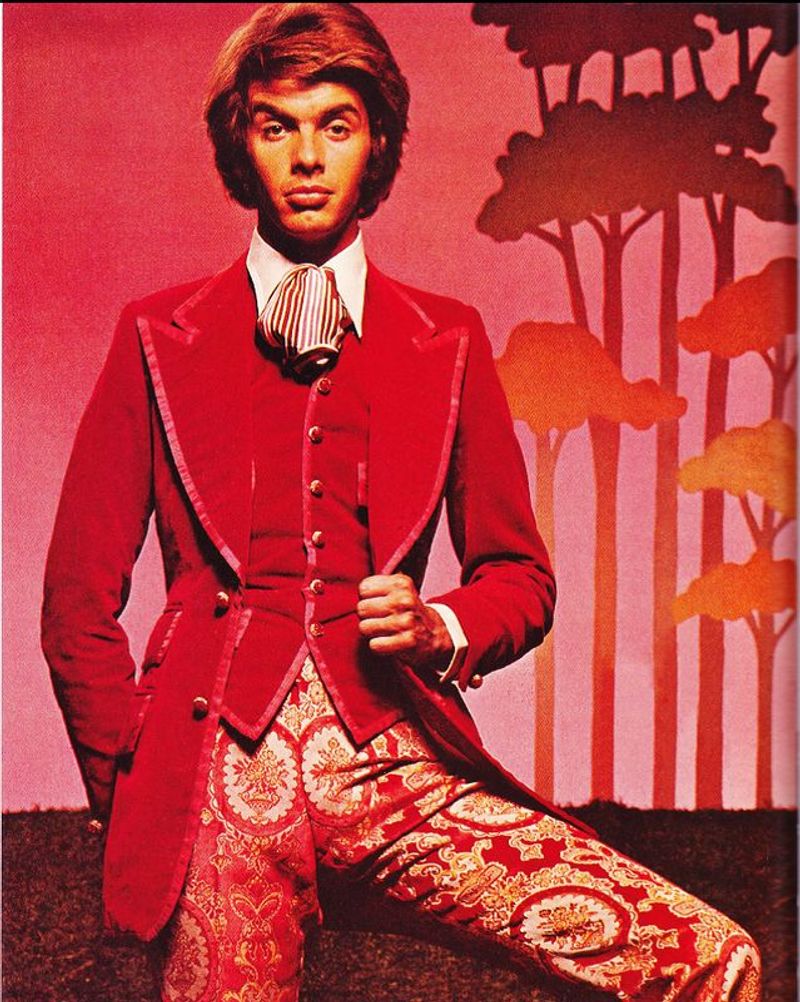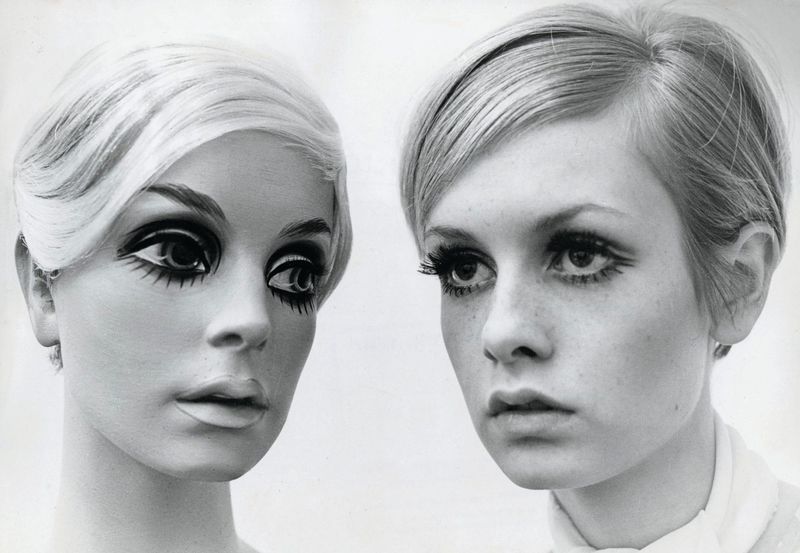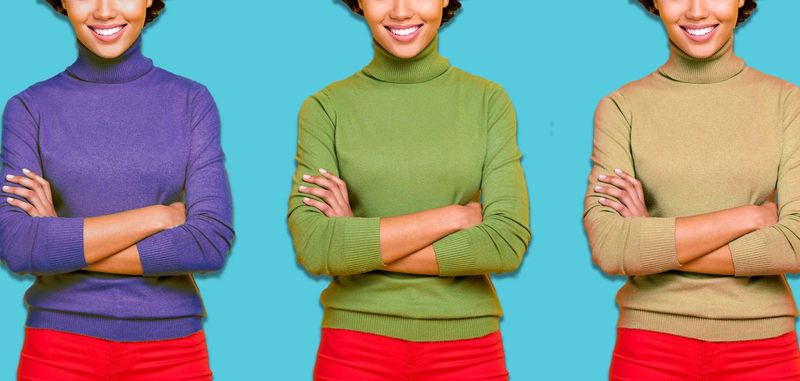Discover the hidden stories behind the iconic fashion trends of the 1960s, some of which have made a striking comeback today. From the rebellious spirit of the miniskirt to the space-inspired go-go boots, these trends were not just about style—they were statements. Join us as we explore 15 intriguing facts about these fashion staples that often go unnoticed, even by top stylists.
1. Go-Go Boots Were Inspired by Space Travel
Go-go boots, those iconic white footwear pieces, were more than just a dance fad. Inspired by the Space Race of the 1960s, their design mimicked the futuristic appeal of astronaut gear. Not only were they a chic addition to any wardrobe, but they also embodied the era’s fascination with space exploration.
These boots became synonymous with mod fashion, reflecting a blend of innovation and style. Though originally linked to dance floors, their appeal was cosmic, capturing imaginations and solidifying their place in fashion history.
2. Psychedelic Prints Were a Political Statement
With swirling, vibrant colors, psychedelic prints weren’t just a ’60s trend; they were a symbol of rebellion. These patterns emerged during a time when the youth sought to break away from the conservative styles of the ’50s. The wild designs reflected the era’s counterculture movement, challenging societal norms.
While today’s versions are more fashion-forward, the original prints carried a deeper political message. They embodied the spirit of freedom and change, making them a powerful tool for expression. Designers today may embrace these prints, but few recall their rebellious roots.
3. The Pillbox Hat Only Stayed Popular Because of Jackie O
The pillbox hat, synonymous with Jacqueline Kennedy Onassis, became a hallmark of 1960s elegance. After JFK’s assassination, the hat transformed into a poignant symbol of grace amidst tragedy. Its understated elegance made it a favorite in Jackie O’s wardrobe, solidifying its place in fashion history.
Designers may have quietly phased it out, yet its legacy remains. Often revisited for vintage-inspired looks, the pillbox hat represents a blend of sophistication and resilience. Its association with Jackie O continues to be a testament to its enduring charm and influence.
4. Bell-Bottoms Were Originally Sailor Pants
Bell-bottoms, the epitome of 1960s and ’70s fashion, owe their origins to the U.S. Navy. Sailors wore wide-leg pants for practicality—they were easy to roll up when swabbing decks. As the style transitioned to civilian life, it gained popularity among the youth.
Adopted by hippies, bell-bottoms became a symbol of counterculture fashion. Their flowy design offered both comfort and a laid-back aesthetic. What began as a functional piece of military attire evolved into a statement of non-conformity, influencing generations of fashion enthusiasts.
5. Miniskirts Were Originally Controversial (Even in the ’60s)
Mary Quant’s miniskirt became a symbol of the swinging ’60s, yet its journey to fashion fame wasn’t smooth. Initially deemed scandalous, many shops refused to stock them, fearing public backlash. The skirt’s hemline might have been short, but it caused a long-lasting impact. Today, miniskirts are widely accepted, yet they were initially a bold statement of rebellion.
With vibrant colors and daring hemlines, the miniskirt challenged the norms and brought about a fashion revolution. It’s fascinating how a simple piece of clothing could ignite discussions about freedom and expression.
6. Mod Fashion Was Stolen from French Runways
The vibrant and bold mod fashion, synonymous with 1960s London, has its roots in French couture. British designers drew heavy inspiration from Parisian visionaries like André Courrèges. Despite its borrowed beginnings, mod fashion became distinctly British, thanks in part to icons like Twiggy.
Characterized by geometric patterns and bright colors, mod fashion symbolized youthful innovation. The style’s clean lines and playful patterns captured the spirit of the decade. While often attributed to London, the mod movement reminds us of the cross-cultural influences that shape fashion.
7. Tie-Dye Was a Cheap Hippie Hack
Tie-dye, a staple of ’60s hippie culture, was born out of necessity rather than fashion. Resourceful and budget-conscious, hippies used the technique to disguise wear and tear on their thrifted garments. The colorful patterns became an emblem of individuality and freedom.
Today, tie-dye is marketed as boho chic, but its origins lie in practicality. The DIY approach resonated with a generation that valued creativity over conformity. This humble beginning has evolved into a mainstream fashion trend, yet its roots remain in the era’s spirit of innovation and resourcefulness.
8. Courrèges’ Space-Age Looks Were Unwearable
André Courrèges, a visionary of his time, introduced space-age fashion that dazzled the 1960s runways. However, these futuristic designs were often impractical and uncomfortable. Metallic fabrics and stiff plastics looked stunning but lacked wearability.
While today’s interpretations are more adaptable, Courrèges’ creations were groundbreaking in their exploration of form and material. His designs pushed the boundaries of fashion, inspiring future designers. The legacy of his space-age looks is a testament to the daring spirit of the era, even if they weren’t always practical.
9. Headbands Were a Practical Solution (Not Just Fashion)
Before blowouts and styling tools became commonplace, headbands served a dual purpose in the 1960s. They kept unruly, long hair out of the face while adding a touch of flair. Flower crowns and simple bands were more than decorative; they were practical solutions.
Today, these accessories are often seen as purely aesthetic. However, their origins tell a story of style meeting necessity. The headband’s evolution from functional accessory to fashion statement highlights the era’s blend of practicality and creativity.
10. PVC and Vinyl Were Considered “Poor Man’s Leather”
In the ’60s, PVC and vinyl emerged as popular alternatives to leather, earning the nickname “poor man’s leather.” These materials offered a shiny, edgy look at a fraction of the cost. Originally, they were a budget-friendly choice for fashion enthusiasts.
Over time, these materials have been embraced by high fashion, shedding their cheap image. They now symbolize a daring and avant-garde style. What started as a cost-effective solution has transformed into a bold statement, proving that fashion is ever-evolving.
11. The “Bouffant” Hairstyle Was Full of Teasing & Hairspray (Ouch!)
The bouffant, a towering hairstyle of the ’60s, was as much a feat of engineering as fashion. Achieving this look required backcombing, hairspray, and a willingness to endure discomfort. Women spent hours perfecting their bouffants, which became iconic symbols of the era.
Today’s hairstyles may favor softer volume, but the bouffant’s impact remains. It represents a time when fashion was about making a bold statement, regardless of the effort involved. The enduring appeal of the bouffant speaks to its dramatic and glamorous nature.
12. Men’s Peacock Revolution Was a Rejection of ’50s Conformity
The Peacock Revolution of the 1960s marked a vibrant departure from the drab conformity of the previous decade. Men traded in their somber suits for colorful, flamboyant attire that included ruffled shirts and velvet jackets. This fashion rebellion was a bold statement against the gray flannel uniformity of the ’50s.
The movement embraced individuality, encouraging men to express themselves through style. The peacock-inspired fashion revolutionized menswear, making it a significant milestone in fashion history.
13. False Eyelashes Were Glued On with Actual Glue
The 1960s saw the rise of dramatic eye makeup, with false eyelashes becoming a beauty must-have. Unlike today’s user-friendly designs, these lashes were applied using actual glue, often causing irritation. Despite the discomfort, women embraced the trend, inspired by icons like Twiggy.
Modern techniques have made wearing falsies a breeze, but the ’60s version required dedication. The enduring allure of false lashes is a testament to fashion’s ongoing evolution, even when the past was less forgiving.
14. Turtlenecks Were Worn to Hide “Unladylike” Necklines
Turtlenecks, now a staple of chic wardrobes, served a modest purpose in the 1960s. Initially, women wore them to cover necklines deemed “unladylike” in conservative settings. They provided a way to comply with dress codes while maintaining style.
Over the years, the turtleneck has shed its conservative image, becoming a fashionable choice for those seeking sleek elegance. Its transformation from a symbol of modesty to a power statement showcases the versatility of fashion.
Turtlenecks continue to offer both warmth and sophistication, embodying timeless appeal.
15. The Shift Dress Was Designed for Women Who Hated Corsets
The shift dress, a ’60s fashion staple, was a liberating alternative to restrictive corsets. Its loose, straight design offered women newfound freedom of movement, contrasting sharply with the structured silhouettes of prior decades. Designers embraced this minimalist approach, celebrating simplicity and ease.
However, some modern versions ironically revert to form-fitting styles, missing the original point. The shift dress remains an enduring icon of women’s emancipation in fashion, representing a shift towards comfort and practicality. Its legacy is a testament to the progressive spirit of the ’60s.
